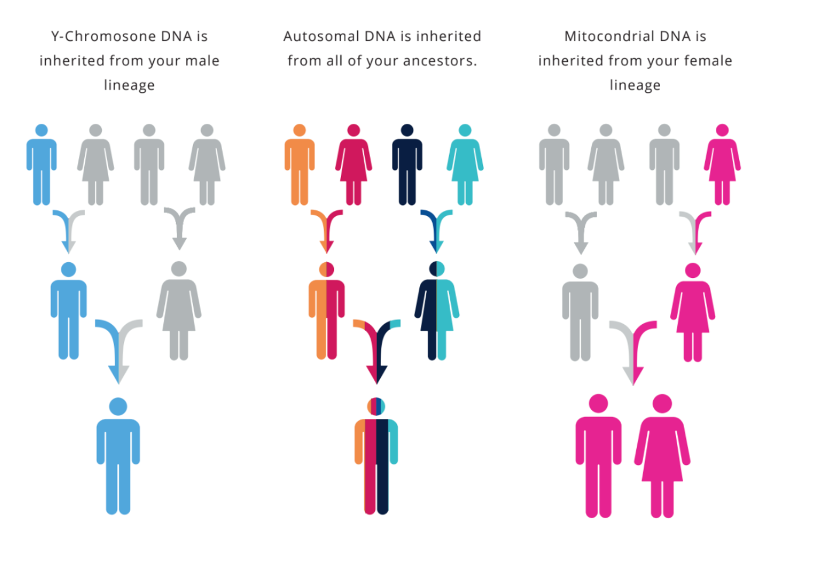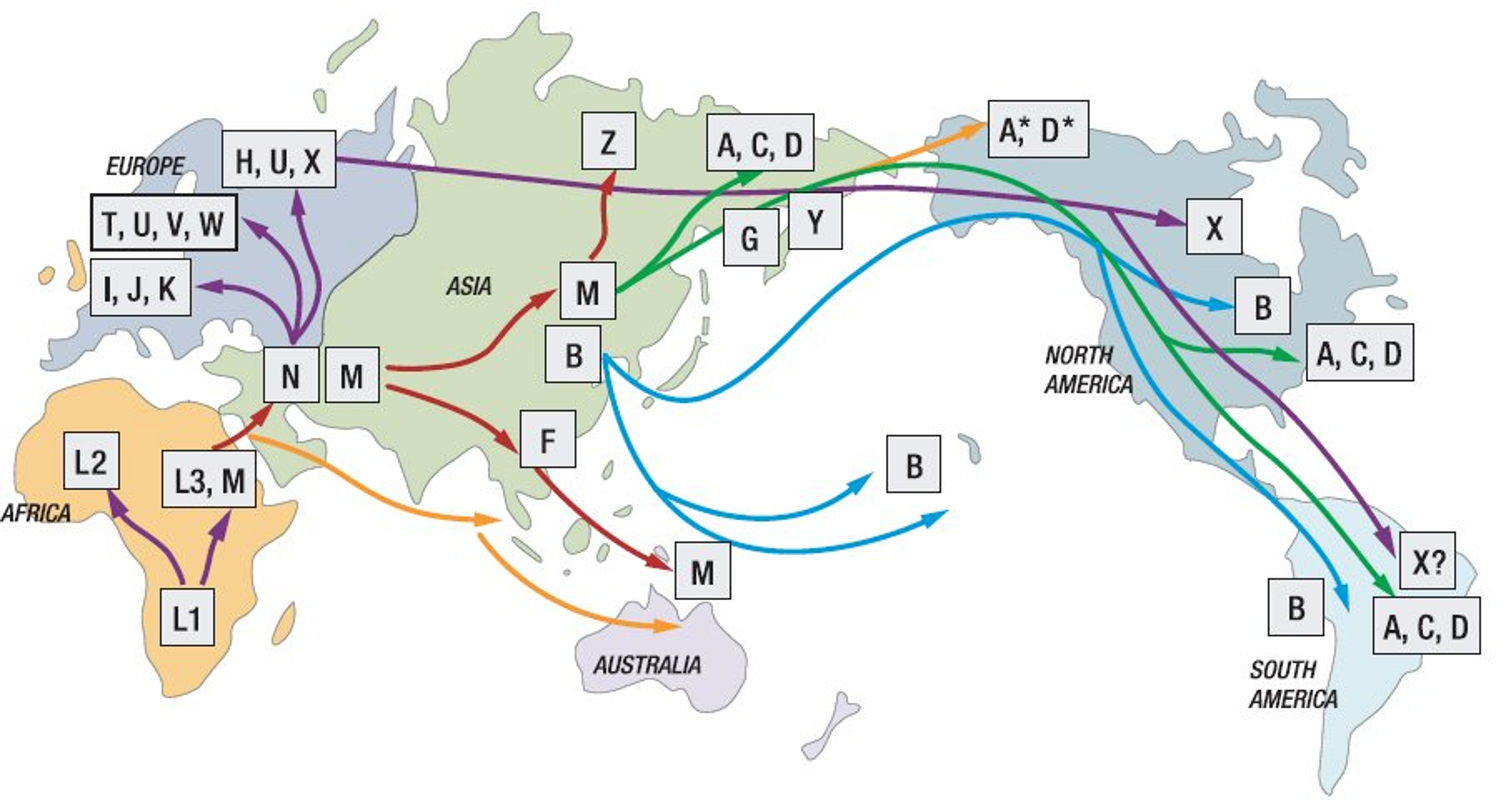What are Haplogroups?
Haplogroups can be thought of as genetic families. Like members of any family, there are some differences between family members but there is enough similarity that they are recognized as belonging to the same family. Members of a haplogroup can vary slightly, and we call these different members haplotypes. Haplotypes are related to each other and belong to the same haplogroup, in a similar way that siblings or cousins are different yet are related and part of the same family.
Certain parts of your DNA can be used to trace your genetic ancestry. In particular, genetic information from both your maternal (mother’s side) and paternal (father’s side) lineage are used to trace genetic ancestry. To trace maternal ancestry, researchers use a special type of DNA known as mitochondrial DNA (mtDNA). mtDNA is passed directly to you from only your mother, therefore it can be used to learn about your maternal ancestry. Everyone has mtDNA. To learn more about the paternal side of your lineage, the Y chromosome is used. The Y chromosome is passed from father to son. Only people with a Y chromosome will have this information as part of their DNA results.

Both mtDNA and Y chromosome DNA can be categorized into haplogroups (genetic families) which is made up of haplotypes (genetic family members). Traditionally, these haplogroups have been given letters as names. The letter names reflect when each haplogroup was first discovered by researchers.
Both mtDNA and Y chromosome haplogroups can be traced to broad geographic regions of the world. To trace genetic ancestry, researchers analyze specific differences in your mtDNA sequence and (if you have it) Y chromosome DNA then compare it to the sequences of people across the globe. Similarities between your genetic information and other people that are known to commonly inhabit a certain region creates a grouping of similar ancestry. See the maps below to look at where the mtDNA and Y chromosome haplogroups are most commonly found. For example if your mtDNA haplogroup is L2, your maternal ancestry traces to western Africa.


These haplogroups are based on patterns of where similar DNA sequences are found on the globe, and new ones are constantly being added as more people are included in studies. Haplogroups are not based on racial or ethnic categorizations. In other words, knowing about your haplogroup does not indicate anything about the way you might identify racially or ethnically.